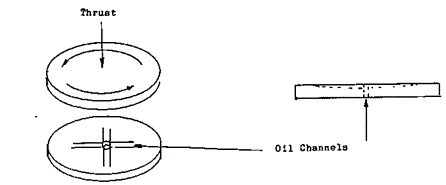The lubrication of Gyratory crushers may be one of the special problems that the Jaw crusher isn’t as readily exposed to. This crusher, because it may be loaded from two sides, often is used in an open pit situation where large ore carriers are dumping directly into the crusher. This means that the machinery is exposed to whatever climate it is being operated in. In hot areas the oil may have to be cooled while the opposite is true for the colder climates. The oil temperature must be kept moderate so that it will provide the necessary cooling as well as warm enough to be easily pumped through the oil system. (not specifically gyratory spider grease).
In most of the modern crushers, instrumentation has been included in their design to provide control over the temperature range of the oil. If the temperature should exceed either the low or high set point then the crusher will automatically shut down. To aid in the cooling a large volume of oil is constantly circulated, by pump, through the oil system. Because of this volume and because it may have to be heated in cold climates, an external holding tank or reservoir is used. To .heat the oil a submersible heating unit will be placed inside this tank.
Now let’s see what this oil lubricates. From the holding tank the oil will be pumped through filters to take out any solids that may be accumulating in the oil. From the filters the oil goes to the drive assembly to lubricate the pinion gear, the thrust bearing, eccentric bushing, as well as the eccentric itself from there it returns to the reservoir.
You notice that the oil doesn’t lubricate the Spider bearing. This bearing is normally greased instead.
You will notice the different types of alloys and surfaces that have to be lubricated, the pinion and crown gear, the alloys of the bronze thrust bearings and the eccentric which is made from Babbitt’s Metal. It is very important for these metals that the right type of oil or grease be used as a lubricant. In fact most manufacturer’s guarantees are void if the wrong oil is used.
I would like to put a foot note in here on thrust bearings, the name thrust bearing is not so much the type of bearing but the job that it does. As an example, the thrust bearing in a crusher is two flat pieces of metal with oil channels in between them. They support the weight of the mantle as well as provide an anti-friction surface for the rotation of the mantle.
There is another thrust bearing that looks very much like an ordinary roller hearing. The difference is the race and the cage of this hearing is heavier, with the hearings themselves sitting deeper into the race.
The thrust is on the face of this hearing while the weight is pushing down on it.
Let’s get hack to our oil system. The reservoir is the area that the operator will give the most of his attention to when he does his circuit checks. It is here that problems with the system will he discovered. At the reservoir there will be gauges to indicate TEMPERATURE and LINE PRESSURE. These of course indicate any fluctuation of the oil temperature or pressure. A change in either of these could mean that a hearing is worn out, the oil level is to low, oil flow low, or perhaps dirty oil. If the crusher is fitted with a water line to cool the oil, it may be restricted or shut off.
